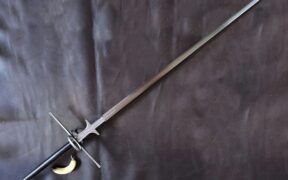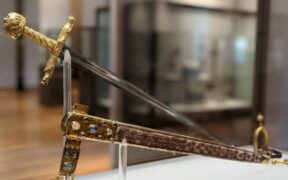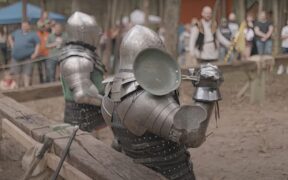Our content features commercial links to our products, committed to transparent, unbiased, and informed editorial recommendations. Learn More
The Ascalon Sword: Saint George’s Dragon Slaying Blade
NO AI USED This Article has been written and edited by our team with no help of the AI
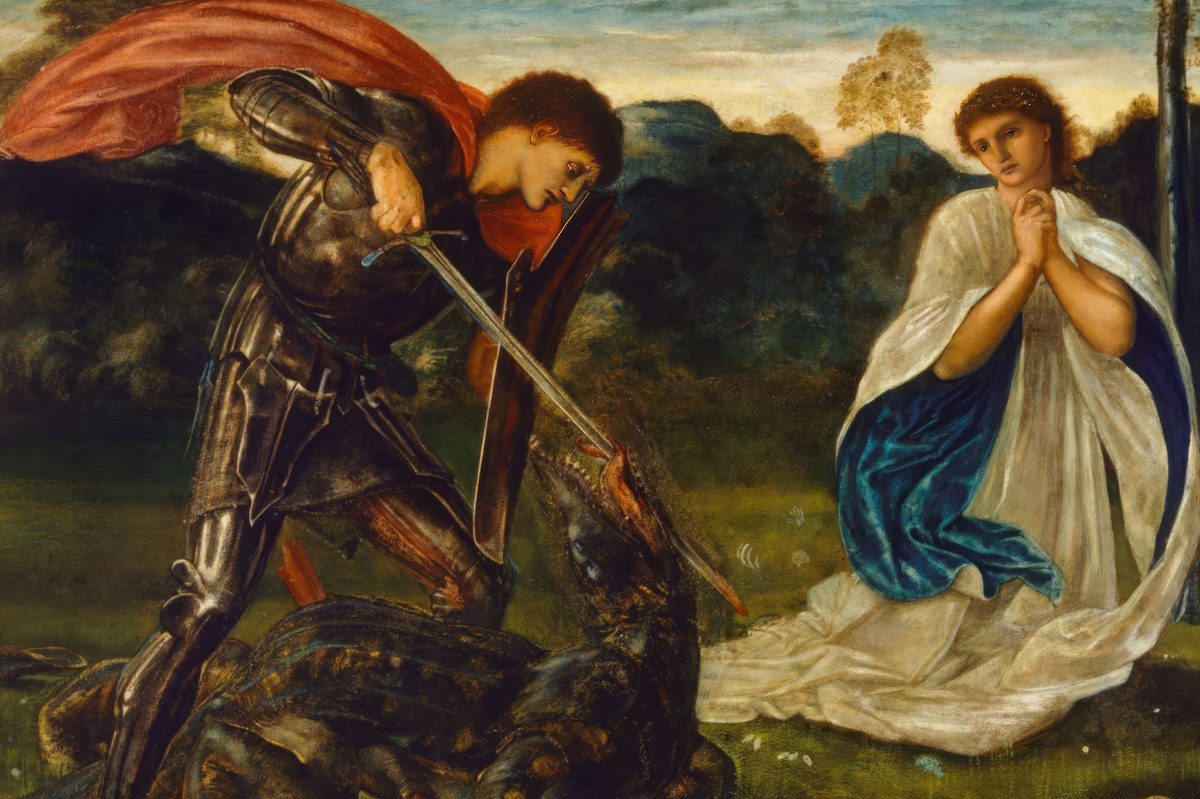
Religion, mythology, and greatly exaggerated tales have provided inspiration for the most famous historical and mythological sword names. Saint George (also known as George of Lydda and George the Victorious) is credited with killing a dragon using his sword, the Ascalon.
The Ascalon is a cherished possession because of the intriguing legend surrounding it, which goes back more than a millennium and has profound resonance in many religions and cults today. In this article, we’ll explain the characteristics and purpose of this unusual blade. We’ll review the narrative of Saint George and his sword, including its history and the possible weapon he actually wielded.
Who is Saint George?
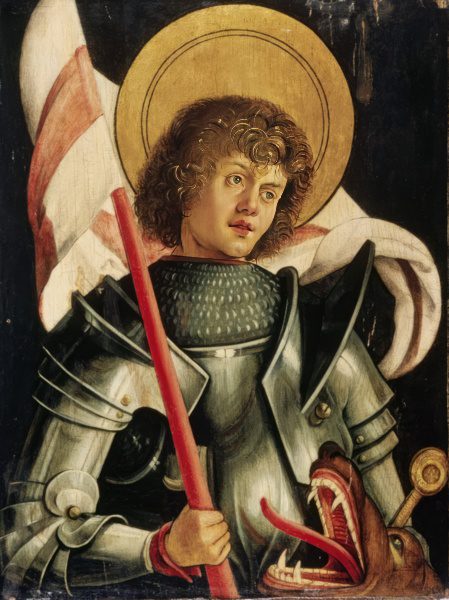
Saint George is an honored and revered saint primarily in the Western and Eastern Christian faith but is also valued in other monotheistic faiths such as Islam. He wasn’t a European knight as commonly believed, but instead lived in the 3rd and 4th centuries AD and served as a soldier in the Roman Empire under the rule of Diocletian.
Not a lot is known about his youth, but it is known that he was from the region of Cappadocia (modern Turkey). He refused to denounce his Christian faith when the persecution of Christians occurred in 303 AD. Despite his unyielding spirit, he was gruesomely tortured and beheaded. Today he is a megalomartyr and a symbol of selflessness and martial valor.
Legends about him as a warrior saint started in the 6th century and grew with time, giving birth to the 11th-century legend of Ascalon, or the slaying of the dragon. This might be a version of the previous legends of Thracian horsemen and Perseus and the killing of a sea monster near Lydda to rescue a princess. Despite this, Saint George the dragon slayer and his holy sword Ascalon remain among today’s most esteemed religious relics.
Characteristics of the Ascalon Sword
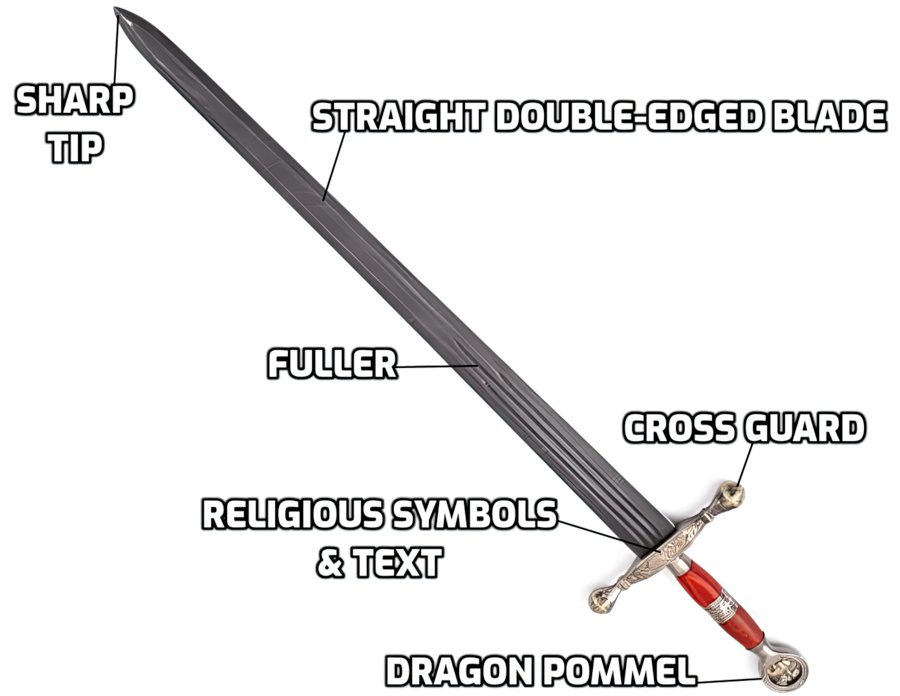
Today, various depictions and sword shapes are associated with the Ascalon sword. There are some fantasy elements, as seen in anime, as well as massive, two-handed greatswords. However, there are no clear indications as to what kind of sword Saint George used aside from the regular sword arsenal of the Roman Empire in the 4th century AD.
Here we will go with the Arming sword, the most popular type of Ascalon sword seen on the market today, as it was imagined when the story for the dragon was written in the 13th century.
Blade
The blade of the Ascalon is straight and double-edged, meaning sharpened on each side so that it can be used for both hacking, slashing, and thrusting. Most of the time, based on its religious background, the Ascalon has writings, verses, or religious symbols engraved on its blade.
If the sword is going to be used for slashing, it must feature a full-tang blade extending under the handle to the pommel and a blade fuller to balance its weight. Most commonly, however, the Ascalon is a decorative sword created of stainless steel so that it will be less prone to corrosion.
Guard
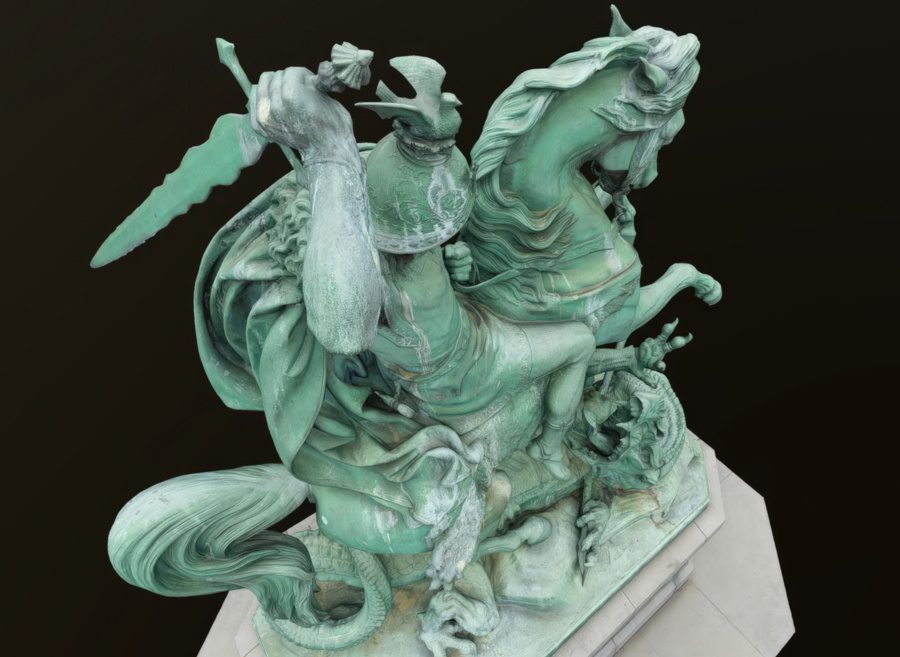
If the sword is described and created following the Arming sword pattern, it will have a cruciform-type crossguard that can be straight or narrowed toward the blade. This guard is usually heavily ornamented with religious symbols or dragons and serpents.
There are some Ascalon swords with highly decorative and ceremonial guards. For example, a large cross shape or C guard shape guarding the cross on the inside.
Handle
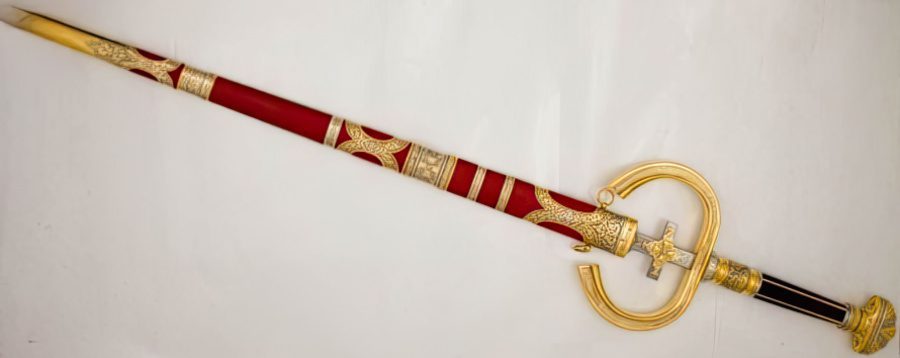
The handle of Saint George’s Ascalon sword is straight and one-handed but can be held with two hands, as described in the legends of the execution of the dragon. Saint George is usually depicted as being on a horse, which lowers the chances of him using a larger sword. The shape of the handle can be the same as an Arming sword, but the difference would be the written religious symbols.
Pommel
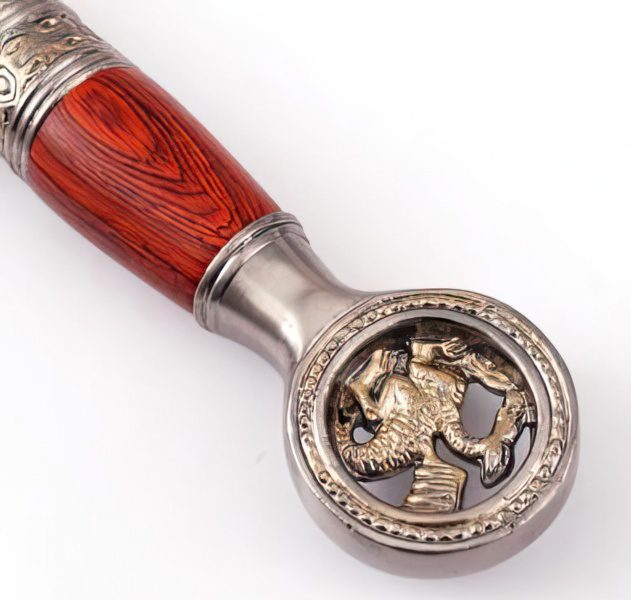
Its dragon pommel is the strongest and most visual characteristic that would define an Ascalon sword today. The dragon placed here is directly linked to the legend of George showing his bravery in rescuing the princess and saving the local populace from the evil dragon.
Weight
Being a one-handed sword that could be used with a shield or a buckler or from a mounted position, the weight of the Ascalon is fairly light. It weighs between 2.2 to 2.6 lbs (1 to 1.2 kg), depending on the type of steel used to create it.
Length
The length of the Ascalon sword is likely in the range of an Arming sword or a Roman Spatha, which was used when George served in the Roman Army. That means the average length for the Ascalon sword would be 20 to 40 inches (50 to 100 cm).
History of the Ascalon Sword
The Ascalon sword was a weapon St. George used to kill the dragon shown in legends and stories. Because of the many different versions of the legend, the Ascalon can be seen as the spear that pierced the heart of the dragon, while the sword was used to end its life. The name Ascalon comes from the Levantine city Ashkelon in modern Israel.
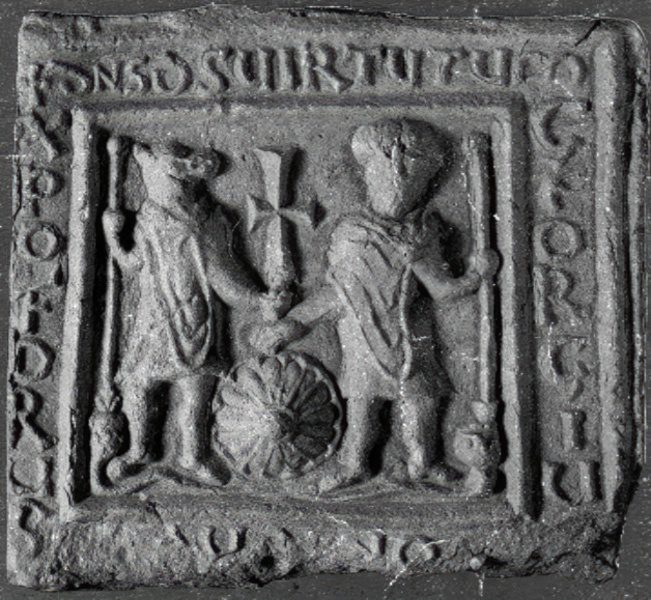
George was depicted as an honorable and brave Christian warrior who died as a martyr for not giving up his faith. He may have been venerated as early as the 4th or 5th century AD, while stories for the dragon-slaying began in the 11th century from a Georgian source. The legends of the dragon were especially popular during the 12th and 13th centuries throughout Europe.
The Ascalon sword and lance became associated with a cult-like worship of Saint George throughout Europe. Today, George and his sword is the patron saint of Georgia, England, Ukraine, Moscow, Portugal, and Spain. This cult likely emerged with the Crusaders serving in these regions, and they took the stories back home with them.
Even after a millennium, the sword is still a very popular tool used in HEMA fencing academy training and Ascalon sword festivals. Like Excalibur, it is one of the most popular swords in modern media and anime and is commonly seen in video games like Guild Wars 2.
Legend of the Ascalon Sword
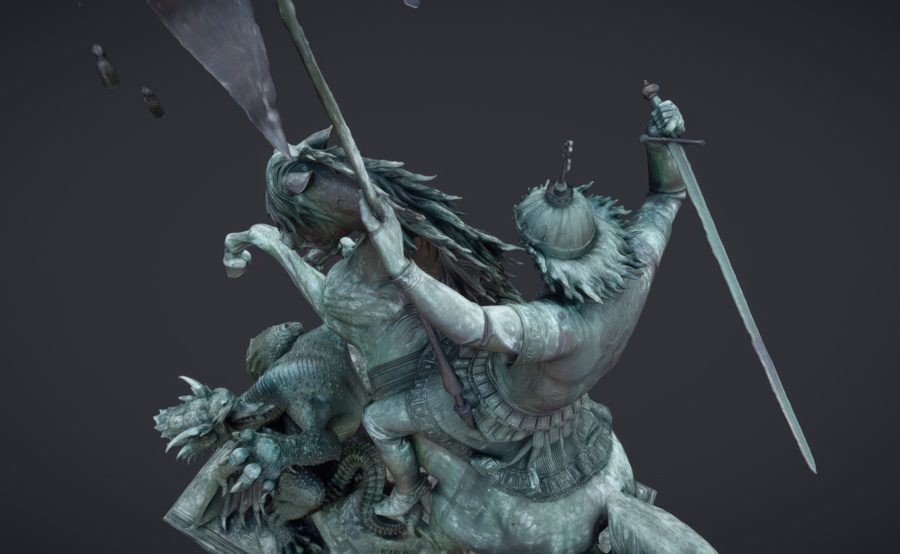
Many depictions and storylines from the 11th to the 13th century tell how George killed the dragon. As time went on, details were added for more dramatic effects.
Saint George and the Dragon is the tale of a terrifying beast that haunted a village and demanded daily tribute in the form of two sheep. The villagers had to offer a human since they ran out of sheep. Saint George happened to be riding by on his horse as the village princess was being carried to the dragon’s lair to be sacrificed and offered to help the local lord save his daughter.
George rode his horse straight into the dragon’s lair armed with his Ascalon sword or lance. Despite the cloud of fiery dragon breath, Saint George was able to puncture the dragon’s lungs. He then tied the princess’s belt loop around the dragon’s neck and dragged it back to the village. The townspeople were horrified to see the dragon, but Saint George assured them they were safe.
George implored the villagers to accept Christianity and freed them from torment by slashing away at the evil dragon with his sword. After Saint George killed the beast, the townspeople honored him by constructing a church in his name.
What Sword Would Saint George Really Use?
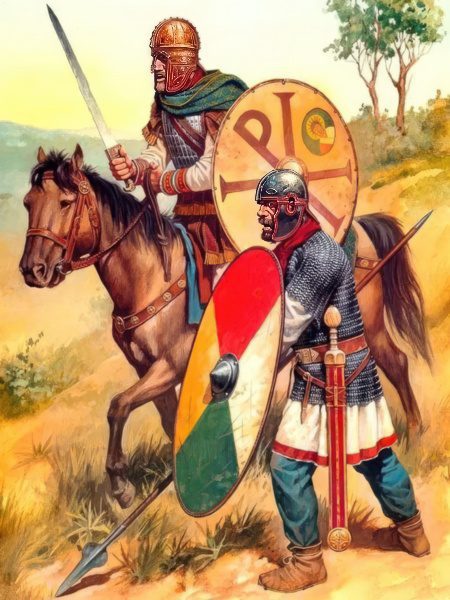
Although not much is known about the personal life of Saint George other than the religious hagiographies that exist (which may or may not be reliable), it is known that he lived during the time of Diocletian (284-305 AD). Diocletian was the ruler that turned the Roman crisis around thanks to his massive military reforms.
The Ascalon blade is shown as a medieval European sword because the Golden Legend, the tale that highly popularized the story of George, the dragon slayer, began in medieval Europe. Contemporary types of weaponry were taken as the standard, primarily the Arming sword and sometimes the later Longsword, Rapier, and curved saber.
The real type of sword that Saint George would have used serving under the rule of the Romans would be the Spatha, the most popular sword at the time, or possibly a late version of the Gladius. These were one-handed swords used in conjunction with a shield or as a secondary weapon if using a pike or spear.

